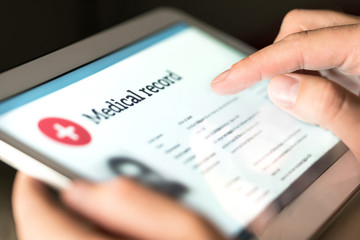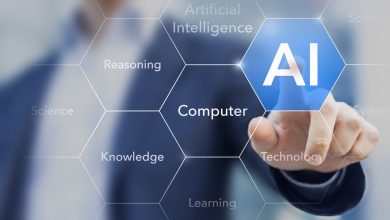Electronic Medical Record Software

Electronic medical record (EMR) software is essential in modern healthcare. It helps healthcare providers manage patient information, medical charting and documentation, billing and coding, clinical decision support, prescription management, appointment scheduling, reporting, and analytics. Electronic Medical Records software streamlines healthcare processes, reduces errors, and improves patient outcomes. In this blog, we will delve deeper into EMR software, its features, types, benefits, challenges, and factors to consider when selecting an EMR software.
Features of EMR software
Medi EMR software has several features that help healthcare providers manage patient information efficiently. These features include:
- Patient information management: EMR software helps healthcare providers maintain patient records, including demographics, medical history, medications, allergies, and lab results.
- Medical charting and documentation: EMR software allows healthcare providers to record patient care in real-time, facilitating more accurate and timely diagnosis and treatment.
- Billing and coding: EMR software streamlines billing and coding processes, reducing errors and ensuring accurate reimbursement.
- Clinical decision support: EMR software provides healthcare providers with alerts and reminders for preventive care and medication interactions, improving patient safety and outcomes.
- Prescription management: EMR software allows healthcare providers to prescribe medications, reducing errors and improving medication adherence electronically.
- Appointment scheduling and reminders: EMR software enables healthcare providers to schedule appointments and send reminders to patients, reducing no-shows and improving patient engagement.
- Reporting and analytics: EMR software generates reports and analytics to track patient outcomes, monitor healthcare provider performance, and identify areas for improvement.
Types of EMR software
There are three types of EMR software: cloud-based, on-premise, and hybrid.
- Cloud-based EMR software: Cloud-based EMR software is host on remote servers and access online. It requires minimal hardware and software installation and is scalable and accessible from anywhere with an internet connection.
- On-premise EMR software: On-premise EMR software is installed on healthcare provider servers and manage internally. It offers greater control and customization but requires high upfront costs and ongoing maintenance.
- Hybrid EMR software: Hybrid EMR software combines the features of cloud-based and on-premise EMR software. It allows healthcare providers to store patient data on-premise while accessing other features through the cloud.
Factors to consider when selecting an EMR software
When selecting an EMR software, healthcare providers should consider several factors, including cost and budget, scalability and customization, security and compliance, user interface and ease of use, and integration with other healthcare systems and software.
Cost and budget with Electronic Medical Record Software
Healthcare providers should consider the upfront and ongoing costs of implementing and maintaining EMR software, including hardware, software, and IT support.
Scalability and customization
Healthcare providers should consider the scalability and customization options of EMR software to ensure it can adapt to their changing needs.
Security and compliance
Healthcare providers should ensure the EMR software meets HIPAA and other regulatory requirements for patient privacy and security.
User interface and ease of use
Healthcare providers should select an EMR software with a user-friendly interface that is easy to navigate and use.
Integration with other healthcare systems and software
Healthcare providers should ensure the EMR software integrates with other healthcare systems and software, such as lab systems and billing software.
Benefits of EMR software
EMR (Electronic Medical Record) software is a computer-based system that digitally stores and manages patient medical records. The adoption of EMR software by healthcare providers has become increasingly common in recent years, and with good reason. Here are some of the benefits of EMR software:
Improved patient care and outcomes
EMR software allows healthcare providers to access patient records quickly and easily, giving them a complete view of the patient’s medical history, test results, and treatment plans. This information helps providers make more informed decisions about patient care, leading to improved outcomes.
Increased efficiency and productivity
With EMR software, healthcare providers can streamline their workflows, reducing the time spent on administrative tasks such as paperwork and charting. This increased efficiency allows providers to spend more time with patients and provide better quality care.
Reduced medical errors
EMR software reduces the risk of errors associated with traditional paper-based records, such as illegible handwriting, misplaced records, and incomplete information. EMR software also includes safety features, such as alerts for drug interactions, allergies, and other potential risks.
Cost savings with Electronic Medical Record Software
EMR software can help healthcare providers save money in a variety of ways, such as reducing the need for physical storage space for paper records, reducing the risk of medical errors and malpractice claims, and improving operational efficiency.
Enhanced communication and collaboration among healthcare providers
EMR software allows for seamless communication and collaboration among healthcare providers, including physicians, nurses, and other members of the care team. Providers can share patient records, test results, and treatment plans in real-time, improving the coordination of care and patient outcomes.
Overall, the benefits of EMR software are clear. By improving patient care and outcomes, increasing efficiency and productivity, reducing medical errors, saving costs, and enhancing communication and collaboration among healthcare providers, EMR software is a valuable tool for improving the quality of care in healthcare.
Challenges of EMR software implementation
Electronic Medical Record (EMR) software implementation can significantly improve patient care and operational efficiency in healthcare settings. However, it is not without its challenges. In this response, we will explore the challenges of EMR software implementation in more detail and also discuss future trends in EMR software development and adoption.
Resistance to change from healthcare providers
One of the primary challenges of EMR software implementation is resistance to change from healthcare providers. Providers may be accustomed to using traditional paper-based systems, which can make transitioning to a digital system a significant adjustment. Providers may also be concerned about the time required to learn how to use the new system or worry that it will disrupt their workflow. To address this challenge, healthcare organizations need to emphasize the benefits of using an EMR system and provide adequate training and support to help providers adjust to the new system.
Cost and time of implementation
Another significant challenge of EMR software implementation is the cost and time required to implement the new system. The implementation process can be costly and time-consuming, posing a challenge for healthcare organizations, especially smaller ones with limited resources. Healthcare organizations should plan for these costs and work to mitigate them by prioritizing the implementation process, leveraging government incentives, and seeking cost-effective solutions.
Data migration and conversion
Data migration and conversion can also be challenging during EMR software implementation. Healthcare organizations must ensure that all patient data is accurately transferred to the new system. This process can be complex and time-consuming, especially if data is stored in multiple formats or systems. To mitigate this challenge, healthcare organizations should develop a data migration plan that includes identifying and consolidating data sources, mapping data fields, and ensuring data accuracy.
Technical issues and system downtime
Technical issues and system downtime can occur during the implementation process. This can impact the usability of the system and patient care. To minimize the impact of technical issues, healthcare organizations should work closely with their EMR software provider to identify potential issues and develop contingency plans. It is also important to maintain and update the EMR system to prevent future issues.
Training and user adoption
Training and user adoption can be significant challenges during EMR software implementation. Healthcare providers need to be trained on how to use the new system effectively, and they need to be encouraged to adopt it in their daily practice. To encourage user adoption, healthcare organizations should provide ongoing training and support, establish clear expectations for system use, and solicit provider feedback to identify improvement areas.
Recap of Key Points
In this discussion, we have explored the key features and benefits of Electronic Medical Records (EMRs) software. Some of the key points discussed include:
- EMR software allows healthcare providers to store and manage patient health information electronically, improving patient care and reducing medical errors.
- EMRs also help healthcare provider’s access patient information from anywhere, anytime, increasing efficiency and productivity.
- EMRs also offer several features, such as clinical decision support, medication management, and patient portal integration, which enhance patient care and engagement.
- Implementation of EMR software is a complex process that requires careful planning and preparation to ensure its successful adoption.
- EMR software can be costly, but the long-term benefits of improved patient care, increased efficiency, and reduced medical errors outweigh the costs.
Future Trends in EMR Software Development and Adoption
The healthcare industry is constantly evolving, and the development and adoption of EMR software is no exception. Here are some future trends in EMR software development and adoption:
Interoperability
EMR software developers are increasingly focusing on creating solutions that can seamlessly integrate with other healthcare systems and platforms. This will enable healthcare providers to share patient data more easily and improve patient outcomes.
Artificial Intelligence (AI)
AI-powered EMR software can analyze large amounts of patient data to identify patterns and trends and predict patient health outcomes. This will help healthcare providers to make more informed decisions about patient care.
Mobile Applications
The adoption of mobile applications is on the rise, and this trend is expected to continue in the healthcare industry. EMR software developers are creating mobile applications that allow healthcare providers to access patient data from their smartphones and tablets, increasing efficiency and productivity.
Cloud-Based Solutions
Cloud-based EMR software solutions are becoming increasingly popular, offering greater flexibility, scalability, and cost-effectiveness. This will enable healthcare providers to access patient data anywhere, anytime, and reduce the need for expensive hardware and infrastructure.
Conclusion
EMR software is essential for healthcare providers, enabling them to store and manage patient data more efficiently and improve patient outcomes. As the healthcare industry continues to evolve, the development and adoption of EMR software will continue to play a critical role in enhancing patient care and engagement. The future trends in EMR software development and adoption discussed above offer a glimpse into the exciting innovations and advancements that we can expect in this field.
Read more blogs on EMR


